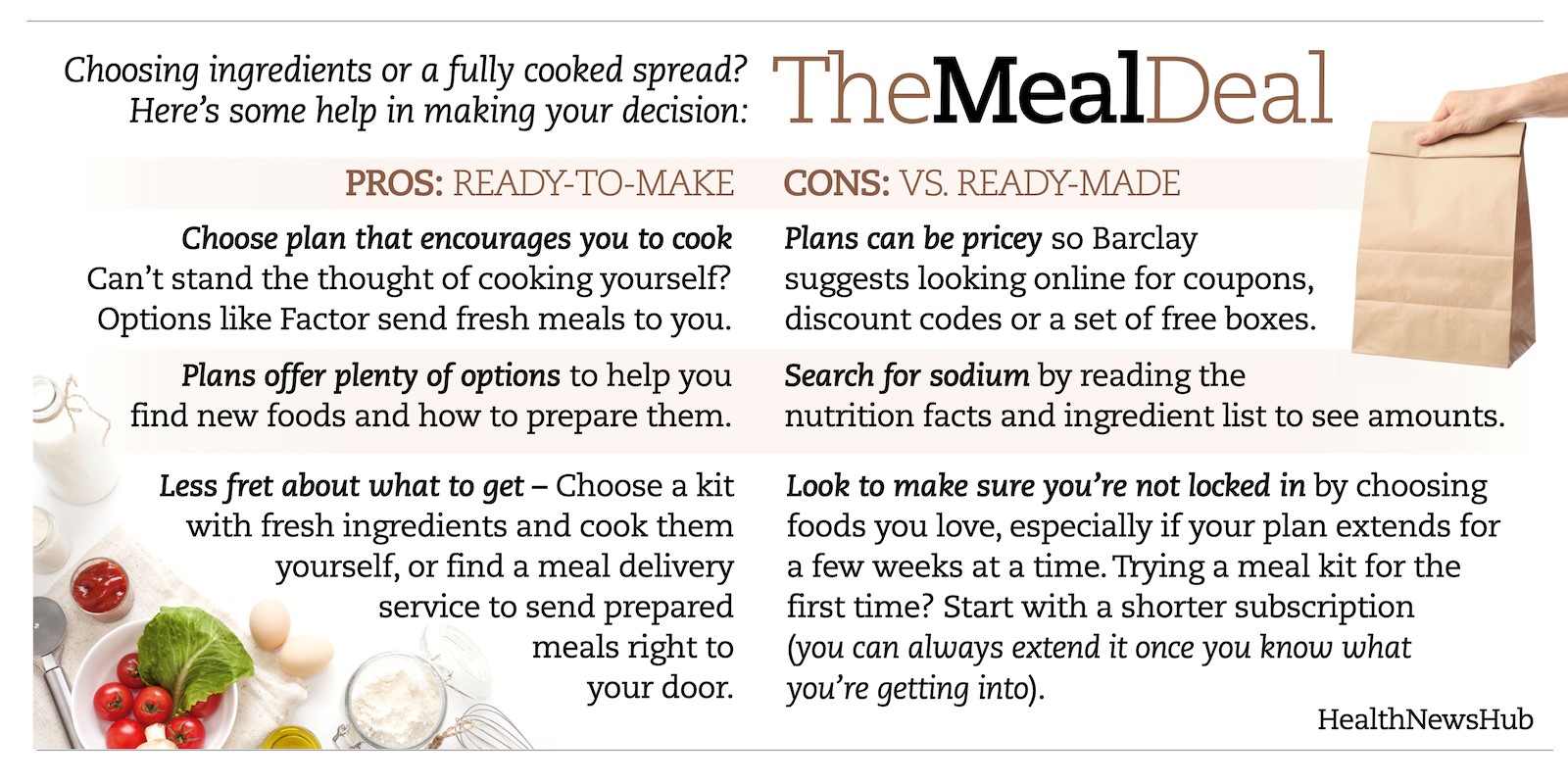If your friends are raving about Factor Meals or HelloFresh saving them time and money, you might be wondering if a meal delivery service makes sense for you.
But which one should you choose? Or are home cooked meals still the way to go? We asked an expert.
Meal delivery services offer a variety of healthy choices.
If creating a nutritious menu just doesn’t seem to come naturally to you, this might be the answer.
“Today, meal services offer a wide variety of dishes,” says Elizabeth Barclay, MBA, outpatient registered dietitian at St. Vincent’s Medical Center. “They include lean proteins, vegetables, complex carbohydrates and unsaturated fats.”
If you’re new to meal services, be sure to understand your goals and choose a meal type that will help you reach them.
“If you’re trying to experiment with new foods or dishes, the ‘Chef’s Choice’ or ‘Special’ might be right for you. Or if you’re trying to build muscle, a plan with an emphasis on protein might be better,” she says.
Almost all of these plans offer vegan or vegetarian options, too. If you don’t have any particular dietary restrictions, many of these services allow you to customize a plan of your own, simply choosing the meals that look best to you.
> Related: 4 Tips for Eating Healthy at Fast Food Restaurants
They also help control portion sizes and added ingredients.
Do you find yourself going through too much salt or butter every week?
“Most of these include spices and seasonings in each box, which helps you be mindful of what you’re adding to your food for extra flavor,” says Barclay.
And the meals themselves are portioned, too.
“If portions are something you struggle with, this can be really helpful,” she adds. “Depending on the plan you select, these meal delivery services often do a great job balancing their plates. And another perk, if you aren’t a big fan of leftovers, these meals rarely have excess food that goes to waste.”
Trying to portion food out on your own? Barclay has this advice.
“I like to use the MyPlate wheel as a reference. ¼ of the plate should be protein, ¼ carbohydrates and ½ vegetables, with some room for fats on top. It’s easy to let carbohydrates be the largest portion, but those don’t have as many vitamins or minerals – although complex carbs do contain lots of fiber.”
And remember to check in with yourself on hunger. Whether your plate is empty or not, it’s always okay to stop eating when you’re full.
> Want more health news? Text StartHere to 85209 to sign up for text alerts
Meal kits can be a great opportunity to learn how to cook something new.
New to cooking? With simple, step-by-step instructions, meal kits are the perfect place to start.
“Whether you’re looking to try something new or learn to cook one of your favorite restaurant dishes from home, meal kits are a great option. They tend to be easy to follow, and can teach you new ways to prepare foods that you eat all the time,” says Barclay.
And once you’re satisfied with the skills and techniques you’ve learned, you can always cancel your subscription and try cooking on your own.
The pros and cons of meal services.
Still not sure if you want to try one out? Weigh these pros and cons:

Even the best meal plan isn’t a replacement for an expert.
If you need a little extra help in the kitchen, meal kits are a great option. But if you’re suffering from health challenges or want a custom plan, a registered dietitian is the way to go.
“An RD is an expert in nutrition. They can help you decipher labels to understand which foods meet your specific needs,” says Barclay.
And if your meal plan isn’t helping you get the results you want, a dietitian can help you pivot.
“Unlike a meal delivery service, a dietitian will walk your nutrition journey with you. As obstacles come up, we can help you navigate them and make sure you achieve the results you’re looking for.”


